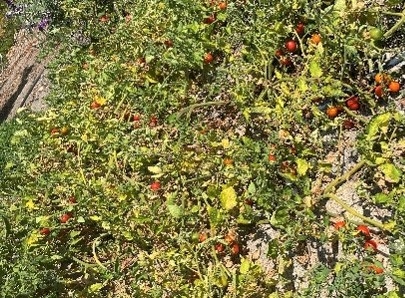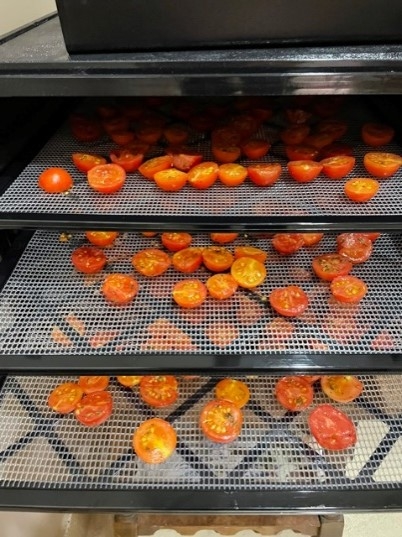If you have a garden or compost bin, you probably have plant volunteers. What is a plant volunteer? Any type of plant that grows somewhere you did not intentionally plant it. That's what happened to Master Food Preserver, Lynn Pastusak. Below, Lynn walks us through how she preserved her unexpected harvest so it wouldn't go to waste.
Dehydrating is one of the oldest forms of food preservation and is very easy to do.
Dehydration (drying) pulls out enough water from food to prevent spoilage.
While it is possible to sun dry some foods or even use your oven as a dehydrator, the simplest and most fool-proof method is to use an electric dehydrator. If you don't already have one, I recommend getting one. They are relatively inexpensive, starting around $40 for a simple but reliable model, and they can save you time and money if you plan to start dehydrating on a regular basis. Look for one that has a temperature control setting between 130° and 150° (mine is from 105° to 165°), a fan to circulate warm air evenly, and trays that are easy to load and clean.
The steps for dehydrating cherry tomatoes are easy.
- Wash your hands and clean all your utensils and trays.
- Preheat the dehydrator to 140°F.
- Rinse the tomatoes and remove the stems.
- Cut tomatoes in half.
- Place tomatoes skin side down on a dehydrator tray. If you would like, you can sprinkle a little salt on them.
- Dry for 5-9 hours. Times may vary depending on the humidity and heat in your area.
- After about 4 hours, start checking them regularly. They are done when they are leathery or brittle. If you want to grind them to make a powder, you'll want them crispy.
Tips from Lynn:
Proper storage is critical to keep tomatoes from re-hydrating and molding. A few options I have used: 1) Vacuum seal them and store them in the freezer, 2) seal them in freezer bags, put the bags in tightly sealed jars, and keep them in the refrigerator or freezer. As long as they are in an air-tight container, they can also be stored at cool to room temperature in a dark location - like a closet. For best quality, use them within 1 year.
What to do with your dried tomatoes:
They are tasty to eat alone as a snack. They can also be added to soups, salads, pastas, sauces, and casseroles. If dried crisp, they can be ground in a food processor or blender and used in recipes like you would use tomato paste. Yum!
Interested in learning more about drying and preserving foods?
Editor - Area Director for UCCE in San Luis Obispo, Santa Barbara, and Ventura Counties


